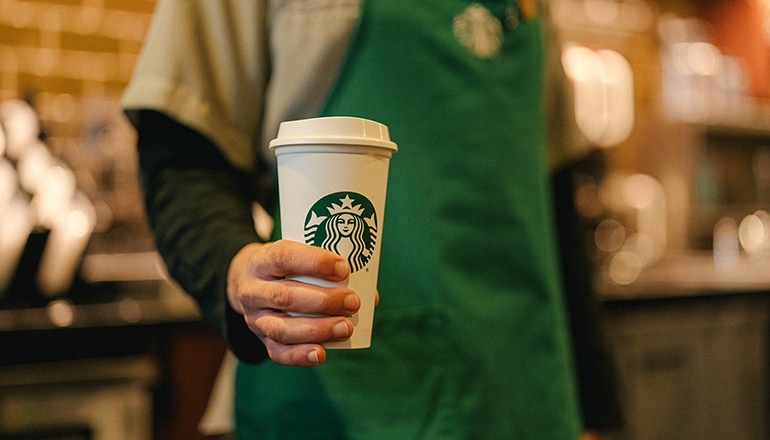In a letter to all company stakeholders, Starbucks’ CEO sets 2030 science-based targets for carbon, water and waste.

In a January 21 public letter, Starbucks CEO Kevin Johnson announced a multidecade commitment to be “a resource-positive company, aspiring to give more than it takes from the planet.” The announcement included science-based preliminary targets for the reduction of carbon emissions, water use and waste by 2030 and outlined five strategies the company has identified to move toward them.
“As we approach the 50th anniversary of Starbucks in 2021, we are looking ahead with a heightened sense of urgency and conviction that we must challenge ourselves, think bigger and do much more in partnership with others to take care of the planet we share,” said Johnson in a statement. “The company’s aspiration is to become resource positive—storing more carbon than it emits, eliminating waste and providing more clean, freshwater than it uses. This aspiration is grounded in Starbucks' mission. By embracing a longer-term economic, equitable and planetary value for our company, we will create greater value for all stakeholders.”
A comprehensive, data-driven environmental footprint of carbon emissions, water use and waste in Starbucks' global operations and supply chain informed the five strategies to prioritize work:
Expanding plant-based options, migrating toward a more environmentally friendly menu.
Shifting from single-use to reusable packaging.
Investing in innovative and regenerative agricultural practices, reforestation, forest conservation and water replenishment in Starbucks' supply chain.
Investing in better ways to manage waste, both in Starbucks stores and in its communities, to ensure more reuse, recycling and elimination of food waste.
Innovating to develop more eco-friendly stores, operations, manufacturing and delivery.
Johnson also outlined three preliminary targets for 2030:
A 50 percent reduction in carbon emissions in Starbucks' direct operations and supply chain.
50 percent of water withdrawal for direct operations and coffee production will be conserved or replenished with a focus on communities and basins with high water risk.
A 50 percent reduction in waste sent to landfill from stores and manufacturing, driven by a broader shift toward a circular economy. To underscore its commitment to the circular economy, Starbucks said it is “pleased to sign the Ellen MacArthur Foundation’s New Plastics Economy Global Commitment, setting ambitious circular targets for its packaging.”
On Starbucks' 50th anniversary in 2021, the company will formalize its 2030 environmental goals based on learnings between now and then. Specifically, Johnson noted, the coming year will involve comprehensive market research and trials to better understand consumer behavior and incentives to encourage more use of reusable containers.
“The New Plastics Economy Global Commitment unites businesses, governments and others behind a clear vision for a world where plastic never becomes waste or pollution, and the ambitious targets required to achieve it,” said Sander Defruyt, lead of the New Plastics Economy initiative at the Ellen MacArthur Foundation, in a statement. “Creating this circular economy for plastic will be a challenging journey, but by signing the Global Commitment, Starbucks is joining forces with more than 450 signatories to make it possible. We urge others to join them. By coming together, we can eliminate the plastics we don’t need and innovate, so the plastics we do need can be safely and easily circulated, keeping them in the economy and out of the environment.”
About the Author(s)
You May Also Like


